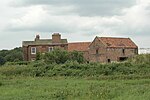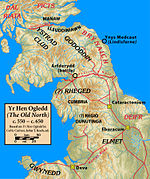River Wharfe

The River Wharfe ( WHORF) is a river in Yorkshire, England originating within the Yorkshire Dales National Park. For much of its middle course it is the county boundary between West Yorkshire and North Yorkshire. Its valley is known as Wharfedale. The watercourse first becomes known as the River Wharfe at the confluence of Greenfield Beck and Oughtershaw Beck at Beckermonds. Flowing initially through Langstrothdale, it then passes by, or in some cases through, Kettlewell, Grassington, Bolton Abbey, Addingham, Ilkley, Burley-in-Wharfedale, Otley, Wetherby and Tadcaster. It then flows into the River Ouse near Cawood. The section of the river from its source to around Addingham is in Upper Wharfedale and has a very different character to the river downstream. The Wharfe is 65 miles (104.6 km) long (before it joins the Ouse), making it the 21st longest river in Britain. It is a public navigation from the weir at Tadcaster to its junction with the Ouse near Cawood and is tidal from Ulleskelf to the Ouse.
Excerpt from the Wikipedia article River Wharfe (License: CC BY-SA 3.0, Authors, Images).River Wharfe
Geographical coordinates (GPS) Address Nearby Places Show on map
Geographical coordinates (GPS)
| Latitude | Longitude |
|---|---|
| N 53.8441 ° | E -1.129544 ° |
Address
Wharfe Ings
YO8 3TT
England, United Kingdom
Open on Google Maps











